| |
RUSSIA
There were links between Merthyr Tydfil and Russia from the time of Sir John
Josiah Guest and Lady Charlotte when the Dowlais Works supplied iron of the
developing railways and a Russian Arch-Duke visited Dowlais. It is hardly
surprising that when Imperial Russia wished to develop its own industry and
exploit its mineral resources that a Welshman should be invited to lend
technical expertise. Such assistance came from John Hughes, an engineer born
in Merthyr Tydfil around 1815 whose father was an engineer with the
Cyfarthfa Works. |
|
|
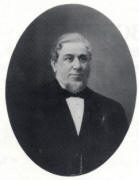 |
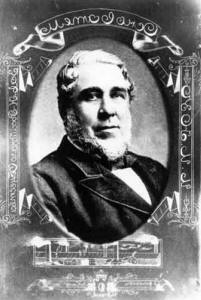 |
|
John Hughes |
John Hughes
(Courtesy of Rod Heather) |
|
|
|
In 1869 John Hughes started his great
enterprise in the Donbass region of
the Ukraine, a sparsely populated area of open steppe. With his key workers
he went on to open collieries and build blast furnaces in this challenging
new environment. The winter of 1870 was exceptionally harsh and there was an
outbreak of cholera, but despite the hardship and difficulties, John Hughes
and his small workforce built the first blast furnace in less than eight
months. The first phase in Russia’s stupendous industrial development was
about to begin. By April 1871 the first iron was smelted. Skilled Welsh
workers, such as John Jones of Dowlais, were vital but courage and
determination was essential. By 1874 all difficulties had been overcome and
the puddling furnaces were in continuous action, producing about 150 tons of
iron a week and over 8,000 tons of iron rails were rolled each year. Within
10 years there were over two thousand persons employed and iron smelting
exceeded 20, 000 tons. |
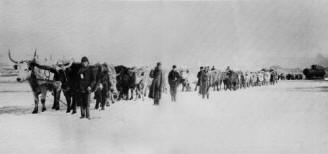 |
|
A Bullock Train hauling
a boiler. |
| |
|
|
|
|
|
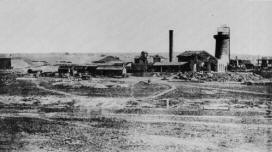 |
|
1872 The First Blast
Furnace |
|
|
Welsh emigrants were recruited to work in this New Russian Company’s Works
and Mines. Many men brought their wives and children with them despite the
terrible journey and the awful temperatures. Rees Richards a furnaceman from
Dowlais wrote home that, ‘ I have seen 60 degrees of frost here and puddlers
working at the furnaces with gloves on and sheepskin coats on their backs.’
As time went on Russians and Ukrainians were trained and able to fill many
positions as foremen and managers in the iron-works and mines. |
|
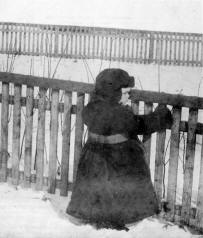 |
|
A well wrapped up worker's
child
plays in the garden |
| |
|
|
|
|
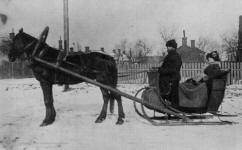 |
| |
|
|
|
|
|
|
Hughes provided many necessary
amenities for his workers. He opened a 12 bed hospital as early as 1870
and there were soon schools, churches, a fire brigade and tea houses.
The Company also gave money towards the Orthodox church and other
religious institutions for the cosmopolitan population. It also paid for
the settlement’s police force. There were also five inns, ten
wine-cellars, four beer halls and a vodka wholesale outlet. The Russian
steel workers had to have their beer, essential for all workers in heavy
industry, this was supplied by the South Russia Brewery Co Ltd. John
Hughes believed in looking after his workforce and took an interest in
the welfare of his employees. Compensation was payable for industrial
accidents and easier light work was offered to widows and injured
workers. |
| |
|
|
|
|
| |
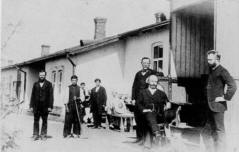 |
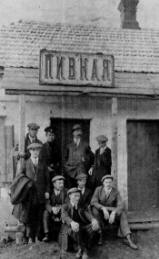 |
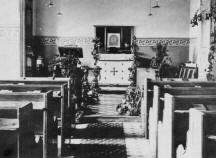 |
|
| |
The Hospital in the
1890's |
The Beer House |
New Anglican Church |
|
| |
|
|
|
|
|
|
John Hughes established a town, steel works and colleries in the
Ukraine.
His town is today a modern industrial city, with a population of over a
million. Since 1961 its name has been Donetsk and today the Russian town
is
proud of its Welsh connection. The success of Hughes' enterprise
encouraged
investment, enabling the Donbass to develop into a major industrial
region. |
|
|
|
The first 'modern' Russian leader, Khrushchev, attended school in
Donetsk,
then still known by its founders' name, Hughesovka. When he came to
Britain in 1956 he said that, 'My father worked in a mine near the
Hughesovka Metal Factory which once belonged to the Welshman, John
Hughes'.
CJ |
| |
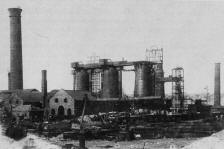 |
|
| |
|
The Blast Furnaces -
1888 |
|
|
| |
|
|
|
|
| |
|
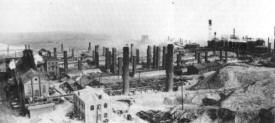 |
|
|
| |
|
Central Pit, Coke Ovens
& Blast Furnaces - 1912 |
|
|
| |
|
|
|
|
| A Owens of Swansea took the following photographs on
his travels in the Ukraine, |
| |
|
|
|
|
| |
Russian wartime
submarine that was in the Black Sea, part of the Ukraine War
Memorial at Hughesovka. |
|
War Memorial. |
|
| |
_AOwen_small.jpg) |
|
_AOwen_small.jpg) |
|
| |
|
|
|
|
| |
War Memorial. |
|
World War Two
entrance to Partisan Tunnel hideout. |
|
| |
_AOwen_small.jpg) |
|
_AOwen_small.jpg) |
|
| |
|
|
|
|
| |
Hughesovka |
|
Hughesovka |
|
| |
_AOwen_small.jpg) |
|
_AOwen_small.jpg) |
|
| |
|
|
|
|
| |
Hughesovka |
|
Hughesovka |
|
| |
_AOwen_small.jpg) |
|
_AOwen_small.jpg) |
|
| |
|
|
|
|
| |
Two of
Hughesovka Folk. |
|
|
|
| |
_AOwen_small.jpg) |
|
|
|
| |
|
|
|
|
| Rod Heather sends us some more photographs of
Hughesovka: |
| |
|
|
|
|
| |
Hughes Family
Home |
|
Hughesovka
Football Team - 1912 |
|
| |
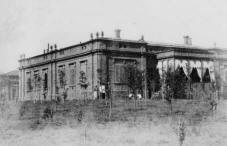 |
|
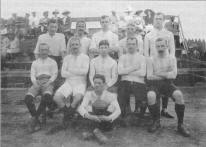 |
|
| |
|
|
|
|
| |
Hughesovka
Hospital Interior - 1907 |
|
Hughesovka
Pharmacy - 1901 |
|
| |
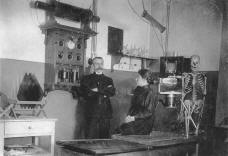 |
|
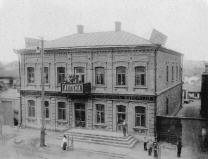 |
|
| |
|
|
|
|
| |
Hughesovka -
Street Scene |
|
| |
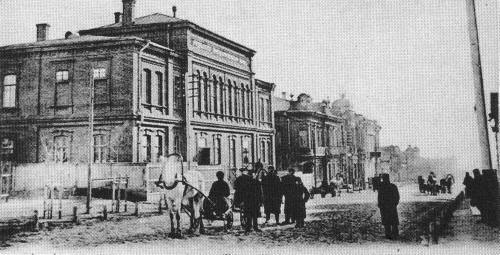 |
|
| |
|
|
|
|
|
|